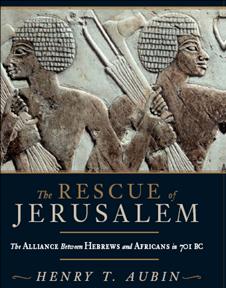Taken from university thesis:http://ses.library.usyd.edu.au/handle/2123/5973
....
Ethiopians
The appearance of Horemheb in an inscription with Tirhakah ruler of Ethiopia, a
contemporary of king Hezekiah and Sennacherib (2 Kings 19:9), led Velikovsky to
conclude that Horemheb had belonged to an era much later than the late C14th BC
accredited to him by the conventional chronology, and that he was in actual fact a
contemporary of this Tirhakah of the 25
th (Ethiopian) in the C7th BC. Thus he wrote in
an unpublished work:
683
… In this reconstruction Haremhab and Tirhaka, the Ethiopian, are
contemporaries; in the conventional version of history they are separated by more
than six centuries, Haremhab being dated to the late fourteenth and Tirhaka to the
early seventh. A certain scene, carved on one of the walls of a small Ethiopian
temple at Karnak, shows them together. The scene proves not only the
contemporaneity of Haremhab and Tirhaka, but also permits to establish a short
period in their relations from which it dates. ….
Given, though, that Egyptian monuments sometimes represented two pharaohs of
completely different eras, together, e.g. “… Egyptian artwork shows [the 12
th dynasty’s]
Sesostris I seated side by side with [the 18
th dynasty’s] Amenhotep I …”,684 I cannot
agree with Velikovsky that the particular carving to which he referred necessarily “proves
the contemporaneity of Haremhab and Tirhaka”.
683
“Haremhab’s Contemporaries”.
684
According to C. McDowell, ‘The Egyptian Prince Moses’, p. 5, fig. 1.
253
Though I do believe that these two kings were far closer in time (approximately a century
apart) than the “more than six centuries” gap separating them in the conventional history,
and that there was some sort of relationship between them.
....

